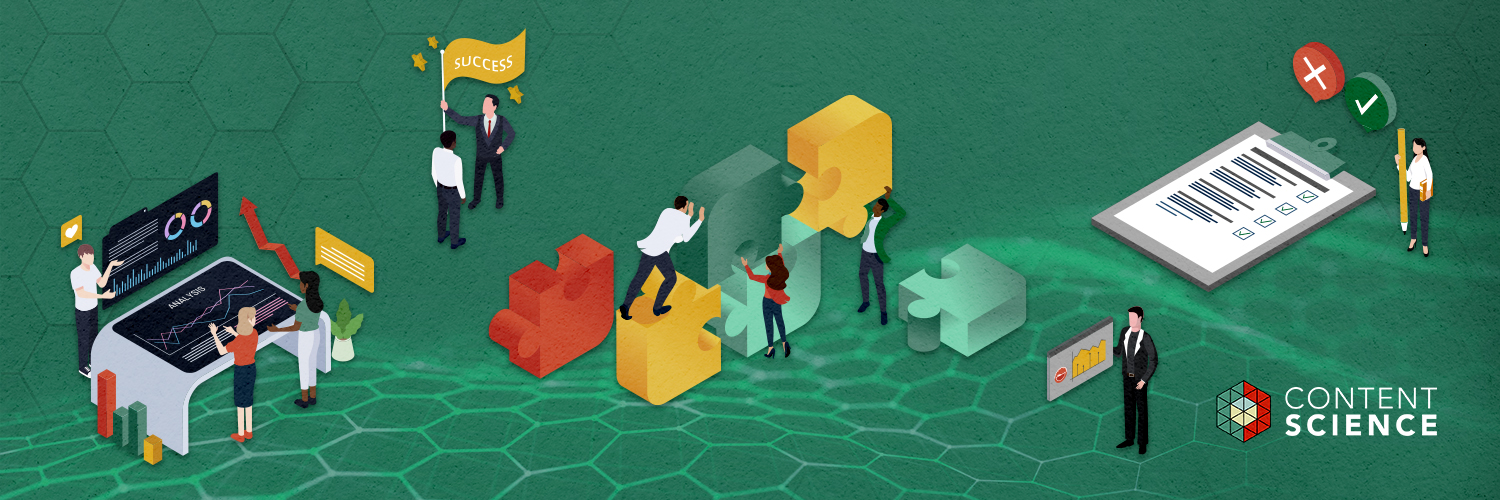
Slow down. If you follow conversations about content effort, you probably have heard this sentiment, and it emerged as a theme at Content Marketing World this year. The intent is to encourage us to prioritize quality over quantity. For example, marketers, stop blasting unwanted content at people!
While I agree with the intent and always have (I talk about content quality muchly in “Clout“), I don’t agree with the advice to slow down. Why? Partly because, when it comes to content effort, my philosophy has become more like Deadpool’s: MAXIMUM EFFORT to overcome any challenge to delivering quality content with impact. (And with content, we know there are plenty of challenges. But, mostly, I’m very, very concerned (yes, two verys there) that slowing down will be misapplied. Mid- to large-size companies and organizations will use this sentiment as an excuse to put off the wrong activities, the hard content work, just as their momentum for maturing their content approach strengthens. And that starts the slippery slope back down to where we were six years ago with content effort—obscurity and indifference.
So, to help you avoid the risk of, at best, losing your momentum for positive content change and, at worst, content falling off your organization’s priority list, I offer my suggestions about which content activities to slow down and speed up.
Decelerate or Stop the Wrong Content Activities
These kinds of activities will not help your organization reach your content or business goals.
1. Stop Playing the Volume Game
Creating and publishing more content for the sake of more is not better. In fact, today, it’s much, much worse. The extreme volume play examples—content farms such as About, Answers, and Entrepreneur—have suffered search engine ranking penalties for a couple of years now. While your organization might not be as extreme as a content factory, you are at risk of making your content harder to discover through search if you pump out high quantities of low quality content and hoard that content, even if it’s outdated. Plus, of course, people who do experience this content will notice the low quality, which puts you at risk of undermining your content and brand credibility.
2. Stop Working in Silos or Going Rogue
It’s one thing to pilot a new approach to content with a small group of people to prove or disprove its value efficiently. It’s quite another to go off and do your own “content thing” as a regular practice. When marketers do this, for example, in a rush to get their content on the interwebs because doing it the right way seems too slow or constraining, the result is often microsite mushrooming—a proliferation of one-and-done abandoned and outdated microsites. I’ve seen this symptom of silo syndrome countless times in industries ranging from book publishing to technology to financial services to travel and hospitality.
3. Stop Polishing a Turd—or a Diamond
A/B testing. Multivariate testing. Great ways to test content, right? Right—to a point. This kind of testing is great for optimizing detailed, tactical (but still important) content decisions. If a slightly different call to action or image boosts your conversions, you might as well use the call to action that gets better results.
But, this testing is not a holy grail that solves all of your content problems. For example, if you use this testing with a content concept based on bad assumptions, you will simply make a bad concept slightly less worse. You will essentially be polishing a turd. Likewise, if you spend a lot of time optimizing a highly effective content concept, you will experience diminishing returns. You might as well polish an already gleaming diamond.
So, let’s not dwell on what to slow down. Let’s turn our attention to where to put MAXIMUM EFFORT.
Accelerate or Start the Right Content Activities
These kinds of activities are the hard work that will take your content to the next level of maturity behind the scenes and the next level of impact with your customers or audiences. (Take this quick assessment for a personalized evaluation of how your organization’s content maturity stacks up.)
1. Establish Content Vision + Capacity
It’s pretty easy to tell people they need to chunk their content. It’s pretty hard to align people across different silos around an ambitious and common vision for content. Increasingly, I am advising organizations to develop at a minimum two visions—a vision for the content experience and a vision for operating content behind the scenes.
For more tips and examples to develop your organization’s content vision and capacity, don’t miss these resources:
- Content Vision Remote Training
- The Power of Pull: A Content Vision Success Story
- 3 Reasons You Need a Content Vision, Not More Content Strategy
- Complex Content Vision + Strategy 90 Minutes at a Time: Q&A with Carlos Abler of 3M
- 6 Characteristics of a Kickass Content Vision
- 4 Content Checklists to Take Your Content Strategy to the Next Level
2. Gather Content Intelligence Systematically
Data is power today. If your content team does not have data, it will be marginalized. For marketing, HubSpot revealed in their State of Inbound report that 97% of inbound marketing campaigns fail without analytics and smart teams analyzing that data. Also, our Content Science research of more than 111 content teams across a variety of business functions (marketing, service, support, and more), found that evaluating content with data was a critical success factor. To set yourself and your team up for success, check out these key resources:
- 101 Ways to Ensure your Content’s Impact with Content Intelligence and Analytics
- 2 Critical Types of Content Analysis
- 5 Surprising Ways User Journeys Make Content ROI + Intelligence Easier
- American Cancer Society: Health Content Intelligence to Modernize Marketing + Save Lives
- 5 “Don’ts” to Move from Content Analytics to Content Intelligence
3. Promote, Personalize, + Archive through Content Engineering
When I predicted that content promotion and personalization would be critical in 2016, I meant it. It doesn’t matter if you create the right content if the right people can’t discover it. I discuss this briefly in the first minute of this interview with TwentyThree.
How can you promote, personalize, and archive content effectively? One key is content engineering behind the scenes, which involves activities like these:
- Modeling content structures, schemas, and semantics
- Architecting content using taxonomies and other metadata magic
- Designing content delivery
- CEM lifecycle planning (including when to archive!) and implementation specifications
- Marketing automation workflow planning
- Designing content management workflows, reporting, and user support services
- Content reuse planning, adaptive content strategy, and content personalization architecture
- Audience- and session-based analytics personalization rules and scoring, validating content targeting against user task success
- Multisite content syndication and content API definitions
When you put MAXIMUM EFFORT into content activities like the above, you’re much more likely to see maximum impact. And one final tip…
Do NOT Lose Your Momentum: The Progress Principle
Whatever content activities you choose to start or stop, to slow down or speed up, please, please, please (that’s three pleases—I’m begging you here) consider the impact to your momentum for improving content. By that I mean think about the consequences to the progress your team and your company or organization will perceive. We know from loads of research that seeing and experiencing progress is critical to motivating people through the crazy hard work of change—all the way through to success. Do not kill the progress or the perception of it.
Successful people, companies, and organizations do the tough work no one else is willing to do. It’s no different with content. Start and accelerate the hard content work, and I promise your content will make a difference.
Events, Resources, + More
The Ultimate Guide to End-to-End Content
Discover why + how an end-to-end approach is critical in the age of AI with this comprehensive white paper.
The Content Advantage Book
The much-anticipated third edition of the highly rated book by Colleen Jones is available at book retailers worldwide. Learn more!
20 Signs of a Content Problem in a High-Stakes Initiative
Use this white paper to diagnose the problem so you can achieve the right solution faster.
Upskill with Content Science Academy
Training for modern content roles through on-demand certifications + courses or live workshops.






Comments
We invite you to share your perspective in a constructive way. To comment, please sign in or register. Our moderating team will review all comments and may edit them for clarity. Our team also may delete comments that are off-topic or disrespectful. All postings become the property of
Content Science Review.